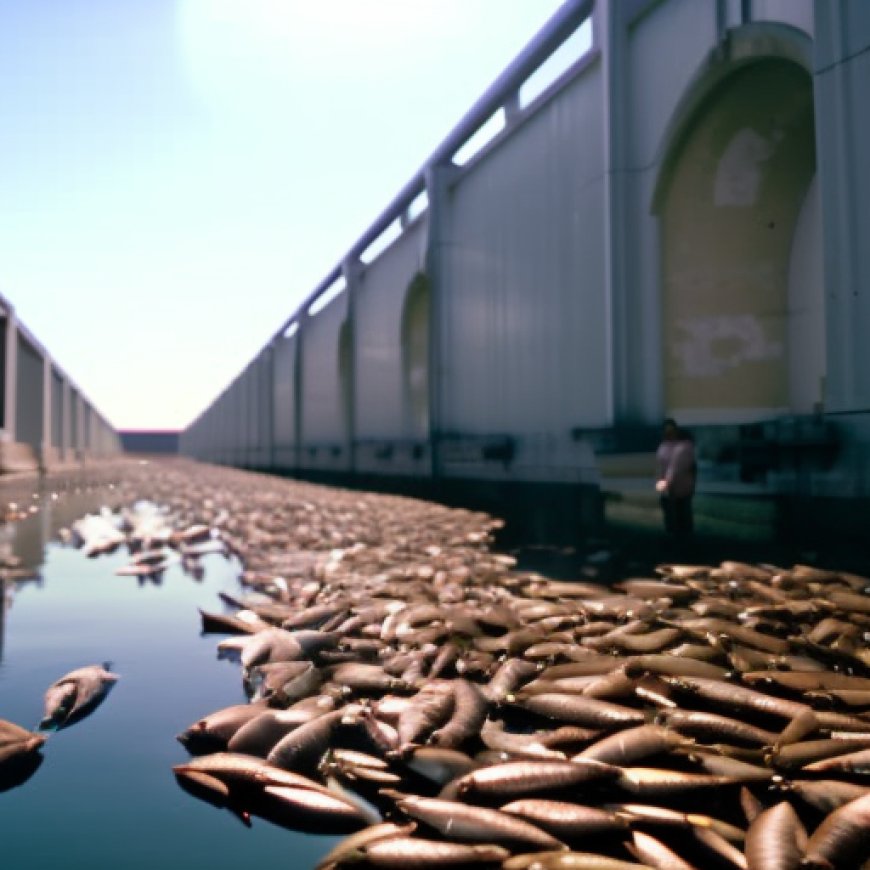Director says Fort Smith treatment plant not responsible for hundreds of dead fish
Director says Fort Smith treatment plant not responsible for hundreds of dead fish 4029tv


An Investigation into Fish Kill along Arkansas River Outfall
An investigation is underway into what caused the death of hundreds of fish along an outfall into the Arkansas River. The incident occurred at the P Street Wastewater Treatment Plant, where treated sewage is discharged into a creek flowing into the river.
Arkansas Game and Fish Commission Launches Investigation
The Arkansas Game and Fish Commission has launched an investigation into the fish kill after being contacted by 40/29 News. Ethan Angel, a game warden for the commission, stated that any significant die-off in a public waterway requires action. Biologists from the commission will conduct a fish kill count and lead the investigation.
Biologists Examine the Area
On Wednesday, biologists examined the affected area. Early estimates suggest that 15 species of fish were affected, with over 1,500 fish killed. The cause of death appears to be poor water quality. Water testing was conducted by the Arkansas Division of Environmental Quality, and the results are pending.
Water Quality and Wastewater Treatment Plant
The P Street Wastewater Treatment Plant processes up to 83 million gallons of sewage. Lance McAvoy, the water and utilities director for the city of Fort Smith, explained that the plant utilizes state-of-the-art technology known as a contact stabilization activated sludge plant. This process involves using microorganisms to consume waste, resulting in discharged water that is often cleaner than the river itself.
No Evidence of Plant’s Involvement in Fish Kill
Although the wastewater treatment facility is the primary suspect, McAvoy stated that there is no evidence linking the plant to the fish kill. The facility was recently inspected by the Arkansas Division of Environmental Quality and found to be in compliance with its permit. McAvoy emphasized that the plant’s discharge is carefully monitored to ensure minimal environmental impact.
Conclusion
Arkansas Game and Fish biologists expect to receive water test results by the end of the week. Despite the fish kill, the water in the area is deemed safe and healthy, with live fish and other animals spotted back in the water. The investigation will continue to determine the exact cause of the fish kill and take appropriate measures to prevent future incidents.
SDGs, Targets, and Indicators
1. Which SDGs are addressed or connected to the issues highlighted in the article?
- SDG 6: Clean Water and Sanitation
- SDG 14: Life Below Water
The article discusses the investigation into the fish kill in the Arkansas River, which is related to water pollution and the impact on aquatic life. This aligns with SDG 6, which focuses on ensuring access to clean water and sanitation for all, and SDG 14, which aims to conserve and sustainably use the oceans, seas, and marine resources.
2. What specific targets under those SDGs can be identified based on the article’s content?
- Target 6.3: Improve water quality by reducing pollution, eliminating dumping, and minimizing release of hazardous chemicals and materials.
- Target 14.1: Prevent and significantly reduce marine pollution of all kinds.
The article highlights the fish kill due to poor water quality issues, indicating a need to improve water quality and reduce pollution (Target 6.3). Additionally, the investigation into the fish kill is aimed at identifying the cause of marine pollution (Target 14.1).
3. Are there any indicators mentioned or implied in the article that can be used to measure progress towards the identified targets?
- Indicator 6.3.2: Proportion of bodies of water with good ambient water quality.
- Indicator 14.1.1: Index of coastal eutrophication and floating plastic debris density.
The article mentions that water testing was conducted by the Arkansas Division of Environmental Quality to determine the water quality, which can be used as an indicator (Indicator 6.3.2). The investigation into the fish kill and its cause can also contribute to measuring the index of coastal eutrophication and floating plastic debris density (Indicator 14.1.1).
4. Table: SDGs, Targets, and Indicators
| SDGs | Targets | Indicators |
|---|---|---|
| SDG 6: Clean Water and Sanitation | Target 6.3: Improve water quality by reducing pollution, eliminating dumping, and minimizing release of hazardous chemicals and materials. | Indicator 6.3.2: Proportion of bodies of water with good ambient water quality. |
| SDG 14: Life Below Water | Target 14.1: Prevent and significantly reduce marine pollution of all kinds. | Indicator 14.1.1: Index of coastal eutrophication and floating plastic debris density. |
The table summarizes the identified SDGs, targets, and indicators based on the analysis of the article.
Behold! This splendid article springs forth from the wellspring of knowledge, shaped by a wondrous proprietary AI technology that delved into a vast ocean of data, illuminating the path towards the Sustainable Development Goals. Remember that all rights are reserved by SDG Investors LLC, empowering us to champion progress together.
Source: 4029tv.com

Join us, as fellow seekers of change, on a transformative journey at https://sdgtalks.ai/welcome, where you can become a member and actively contribute to shaping a brighter future.







